7 Small Flowering Trees That Bloom Beautifully In Compact Yards & Pots
Bring color, charm, and seasonal blooms to small gardens, patios, and pots with these gorgeous flowering trees that don't need much space to shine.

Melanie Griffiths
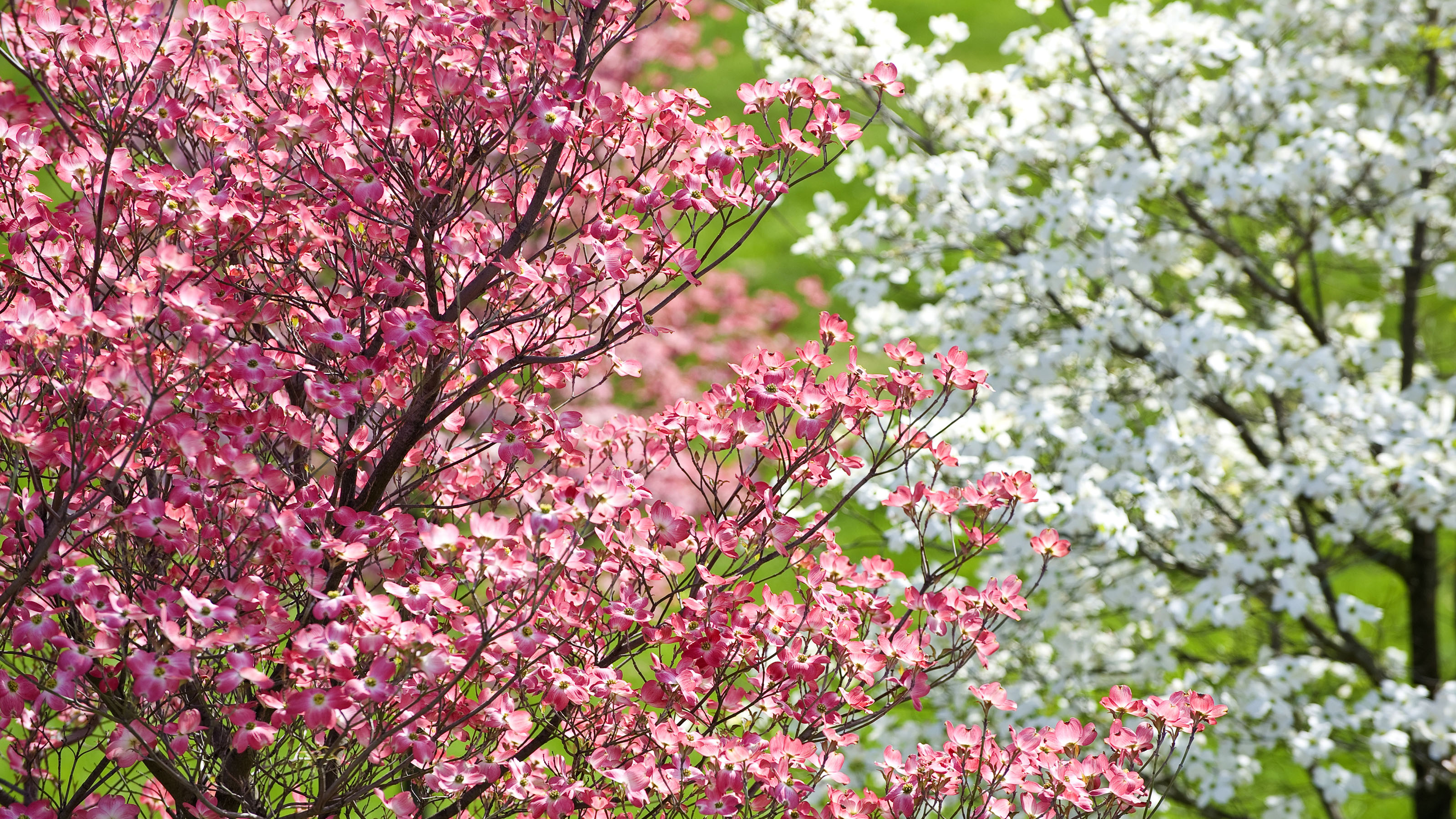
Have you come to live in a home with a small yard? Perhaps you didn’t pay attention to the lack of space, or it was not a top concern when you moved in. But now you’ve come to realize that most trees are too big to grow in your yard – though you'd love to add color and blooms. So, what can you grow? We’ll take a look at some small flowering trees you might consider. Luckily, several attractive options offer year-round appeal without overwhelming your space.
Smaller gardens don't have to miss out on structure or color – many small trees thrive in tight spots, offering spring and summer blooms, fall color, and even winter interest. Whether you want to plant a tree with fragrant flowers, colorful foliage, or berries for wildlife, compact bloomers can offer big rewards.
When choosing small flowering trees, consider more than just height. Look at the mature width, root spread, seasonal interest, maintenance needs, and how much light your garden gets. Some trees are better suited to containers, while others are perfect for anchoring mixed borders or screening unwanted views. Many small trees thrive with very little effort, offering flowers, fruit, attractive foliage, and year-round color. Whether you're looking for trees to enhance privacy, support wildlife, provide shade and cooling, or just add interest throughout the seasons, one or more of these miniature beauties can become a valuable part of your landscape.
1. Vernal Witch Hazel
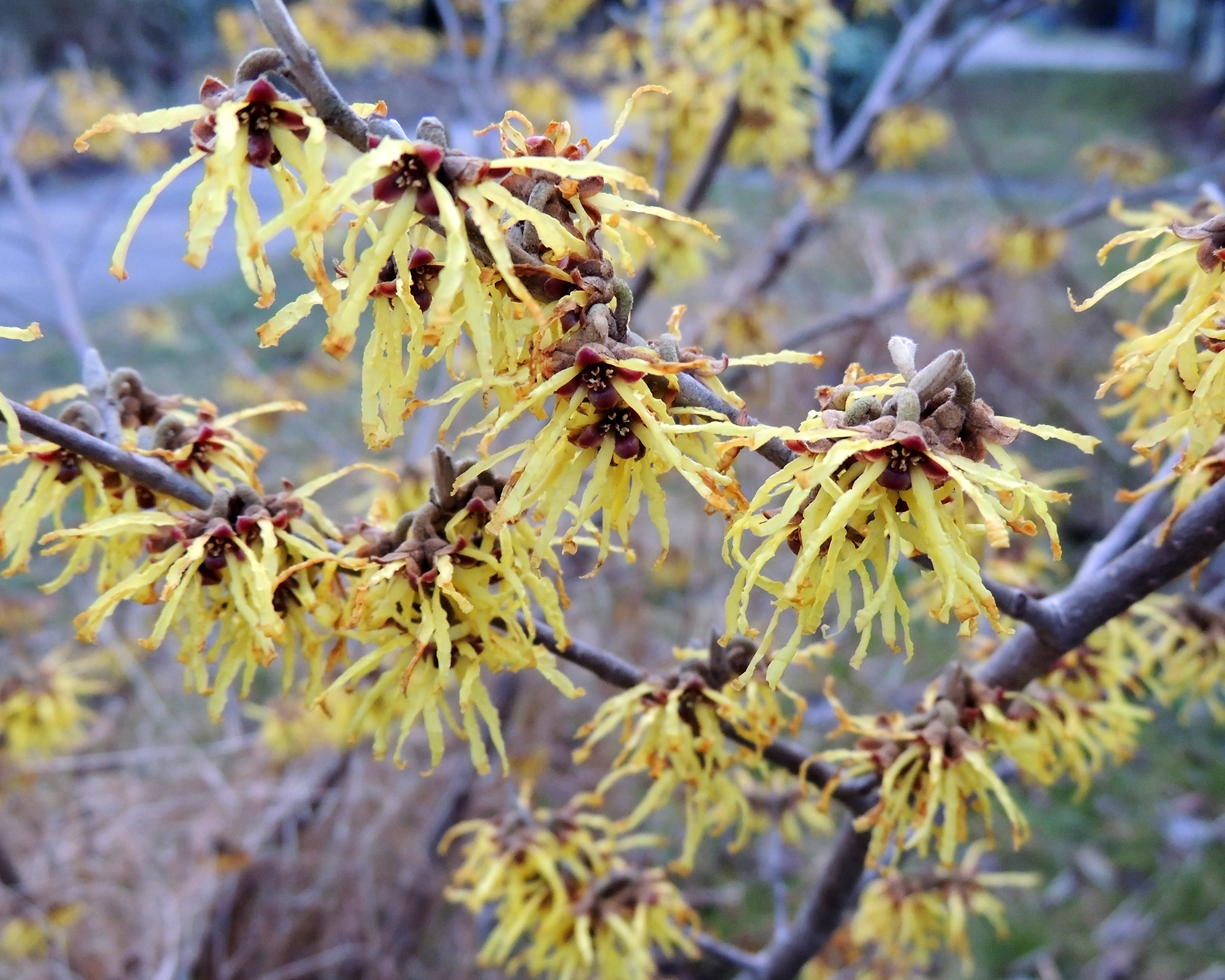
Although vernal witch hazel (Hamamelis vernalis) is botanically classified as a tree, it is often referred to as a shrub due to its size and shape. It's perfect for adding winter color and interest to small yards, as it blooms with fragrant yellow, orange-red flowers. Interestingly, vernal witch hazel is the only flowering tree in North America where flowers, ripe fruit, and next year’s leaf buds remain on its branches at the same time.
This tree grows best when planted in a full sun to part shade location in USDA zones 4 to 8. It tolerates moist soil but prefers it to be well-drained, rich, and organic. Witch hazel will tolerate clay soil, but not dry conditions. It will have a more open habit when grown in part shade. This tree is tough and easy to grow, and will reach 6-10 feet in height at maturity – ideal for small yards or urban gardens. It's also a great choice for gardeners seeking four-season trees.
Buy vernal witch hazel at Nature Hills.
2. Japanese Tree Lilac
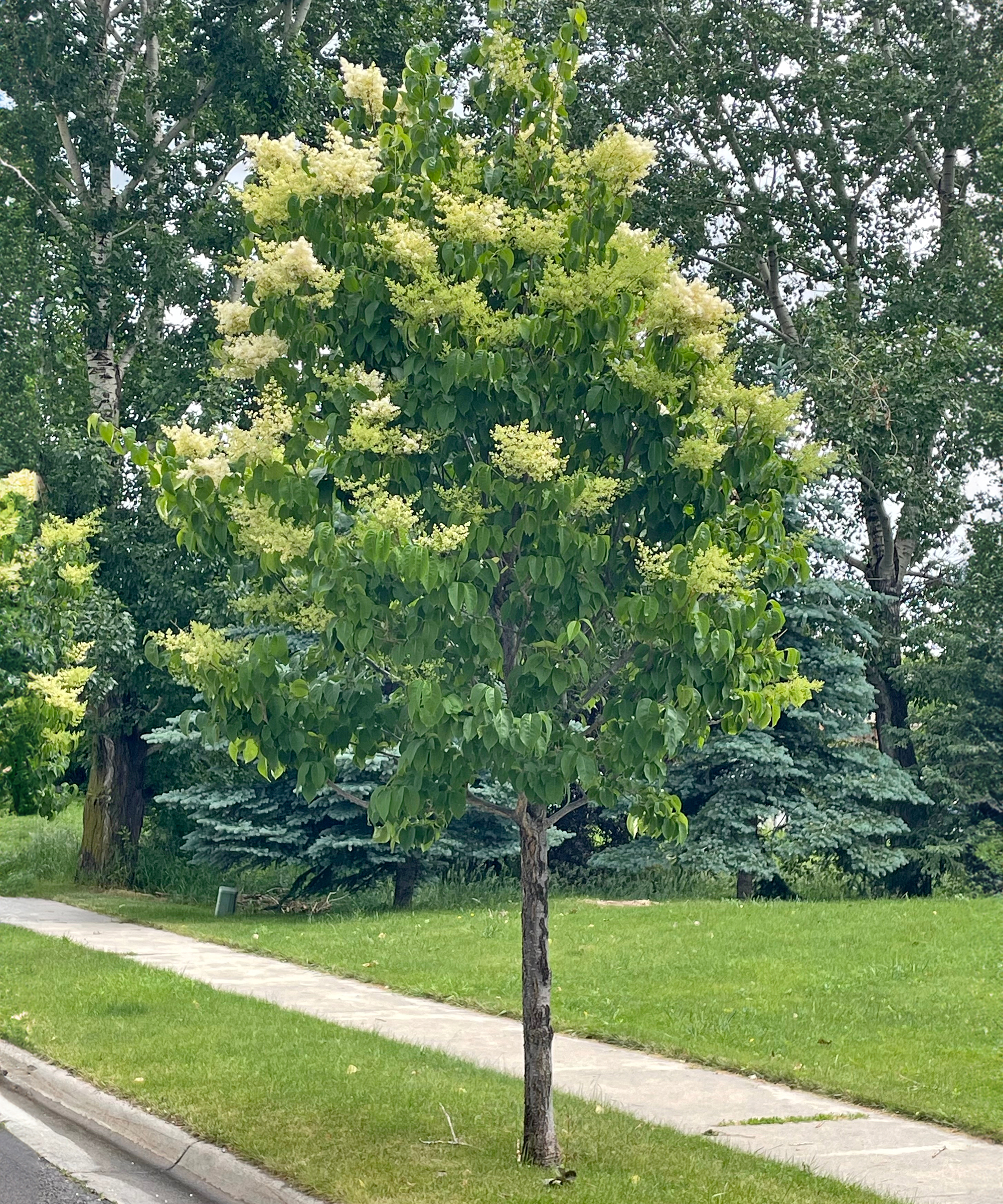
Japanese tree lilac (Syringa reticulata) is sometimes classified as a shrub with high ornamental value and attractive bark. Its creamy white blossoms appear in early summer, often after other spring-flowering trees have faded.
Sign up for the Gardening Know How newsletter today and receive a free copy of our e-book "How to Grow Delicious Tomatoes".
With an upright, narrow form reaching 25 feet high by 15 feet wide in maturity, Japanese tree lilac, available from Nature Hills, is one of the larger options on this list. However, the tree's strong vertical growth makes it an excellent choice for small yards where space is tight but height is welcome. A similar plant is the Peking lilac, available via Etsy, which is slightly smaller and has beautiful exfoliating bark.
Japanese tree lilac is hardy in USDA zones 3 to 7. This stunning tree produces more flowers if grown in full sun. Make sure the soil is loose and rich with compost mixed in to promote proper drainage.
3. Dwarf River Birch
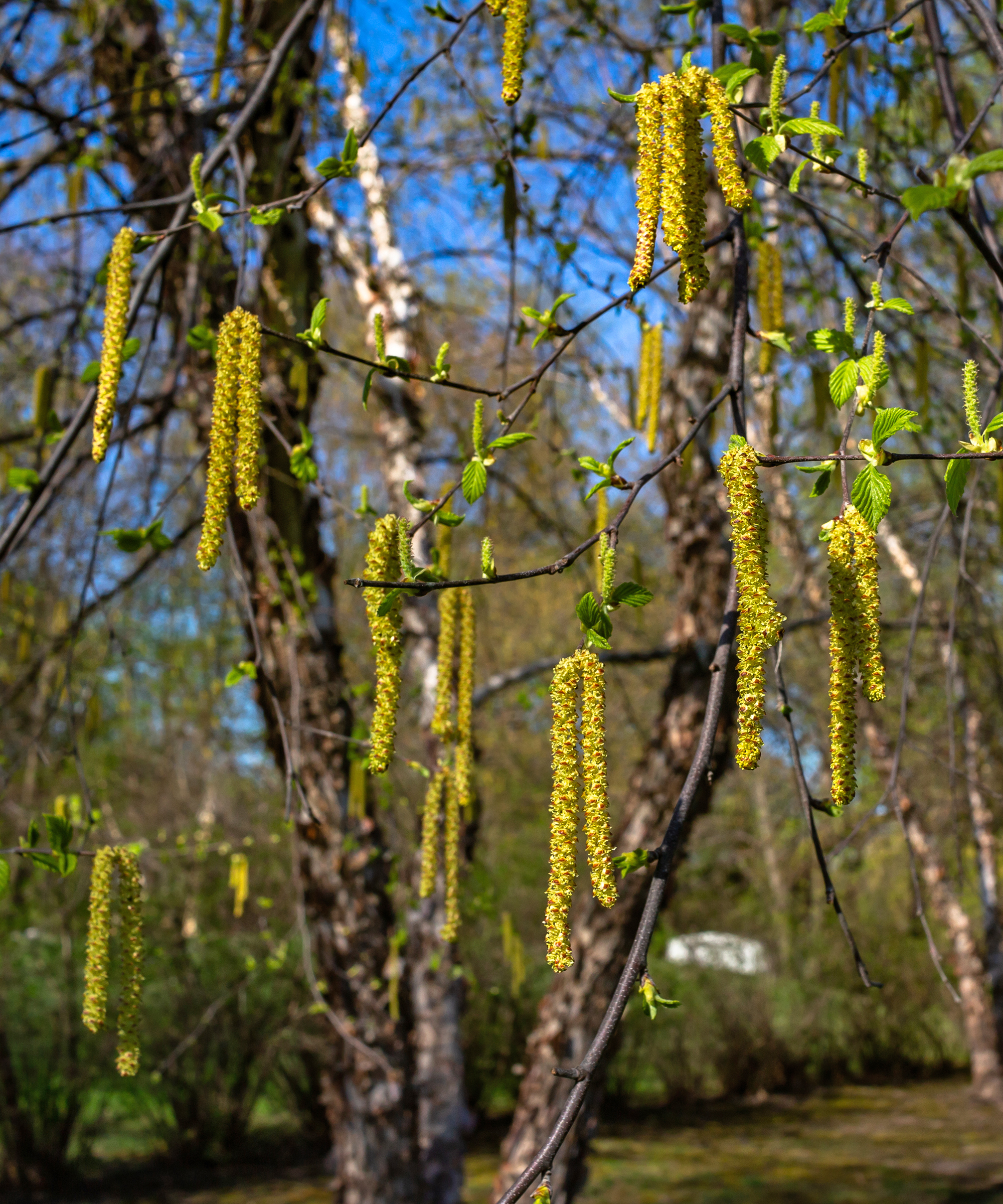
River birch (Betula nigra) is a resilient native tree prized for its striking, peeling bark, which adds winter appeal, and its ability to thrive in wet soil conditions, tolerating both flooding and heat. However, the tree also produces small, delicate flowers in spring. These appear as catkins in clusters of yellow to green, which add lovely texture and interest, as well as supporting pollinators.
Though full-sized river birches can reach towering heights, compact cultivars like 'Little King' (also sold as 'Fox Valley'), available via Monrovia, stay a manageable 10 to 12 feet tall. Their refined shape and multiseason appeal make them perfectly suited to small gardens with poor or wet soil.
River birches prefer mostly moist to wet sites and do best in soils that are acidic, sandy, or rocky when well-draining. They are compatible with a full sun to part shade position in USDA zones 4 to 9.
4. Serviceberry
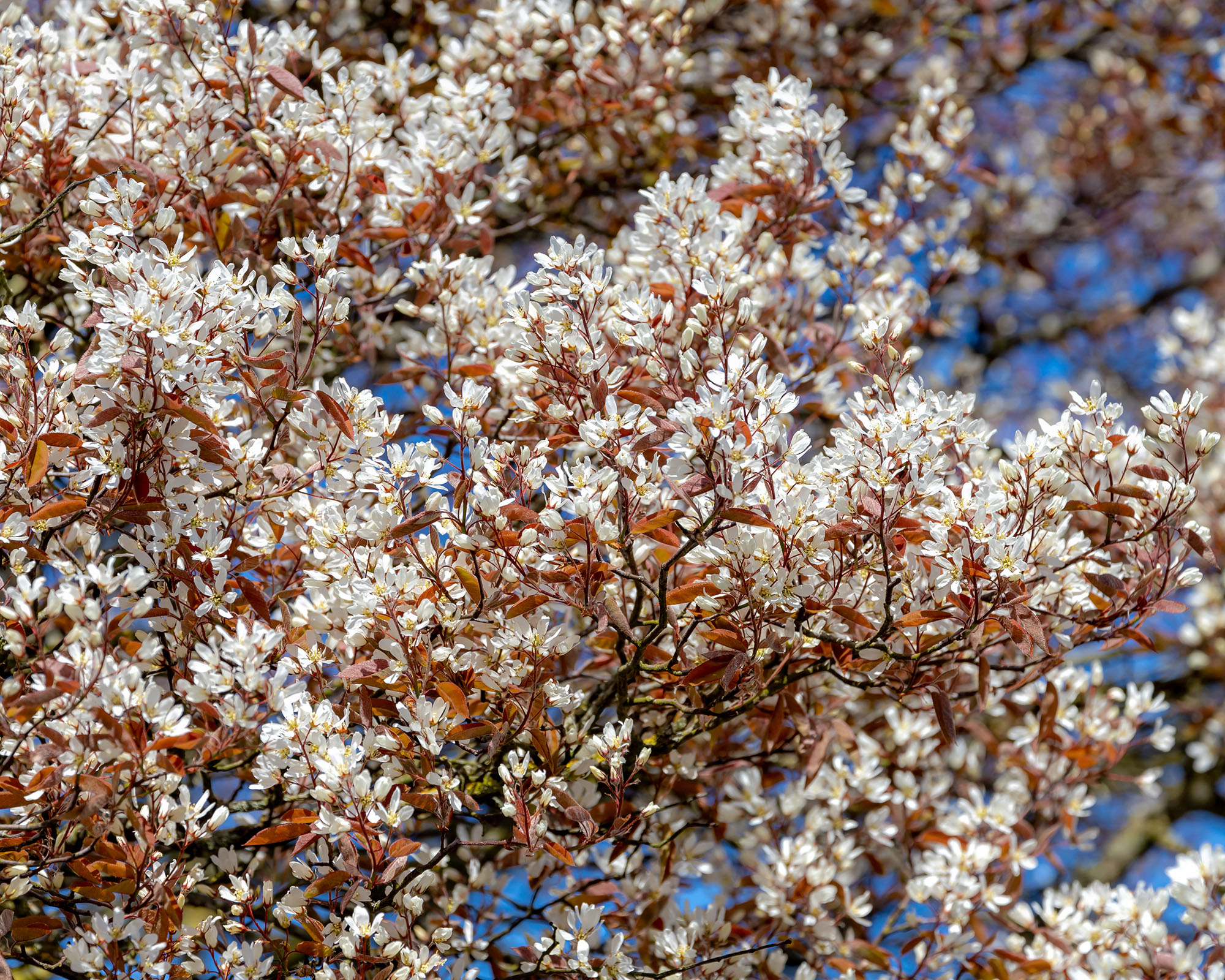
Serviceberry (Amelanchier spp.) is one of the finest small ornamental trees you can plant. It's frequently used as a specimen in both commercial and residential landscapes. These graceful trees provide four-season interest: white spring flowers, edible purple fruit in summer, brilliant red-orange fall color, and smooth, silver-gray bark in winter.
Serviceberries grow best in full sun to part shade in USDA zones 4 to 9, with full sun providing the best flower and fruit production. They prefer moist, well-drained, slightly acidic soil, but are adaptable to a range of conditions once established. Avoid sites that stay too dry or compacted, and add organic matter when planting to help retain moisture.
These gorgeous trees can be used in group plantings for backdrops, screens, and borders, but are equally stunning as solo performers. Look for varieties like 'Autumn Brilliance', available at FastGrowingTrees that grow 15 to 25 feet tall and offer good disease resistance.
If you enjoy edible landscaping, serviceberry doubles as a small fruit tree, producing berries with a taste reminiscent of blueberries.
5. Star Magnolia
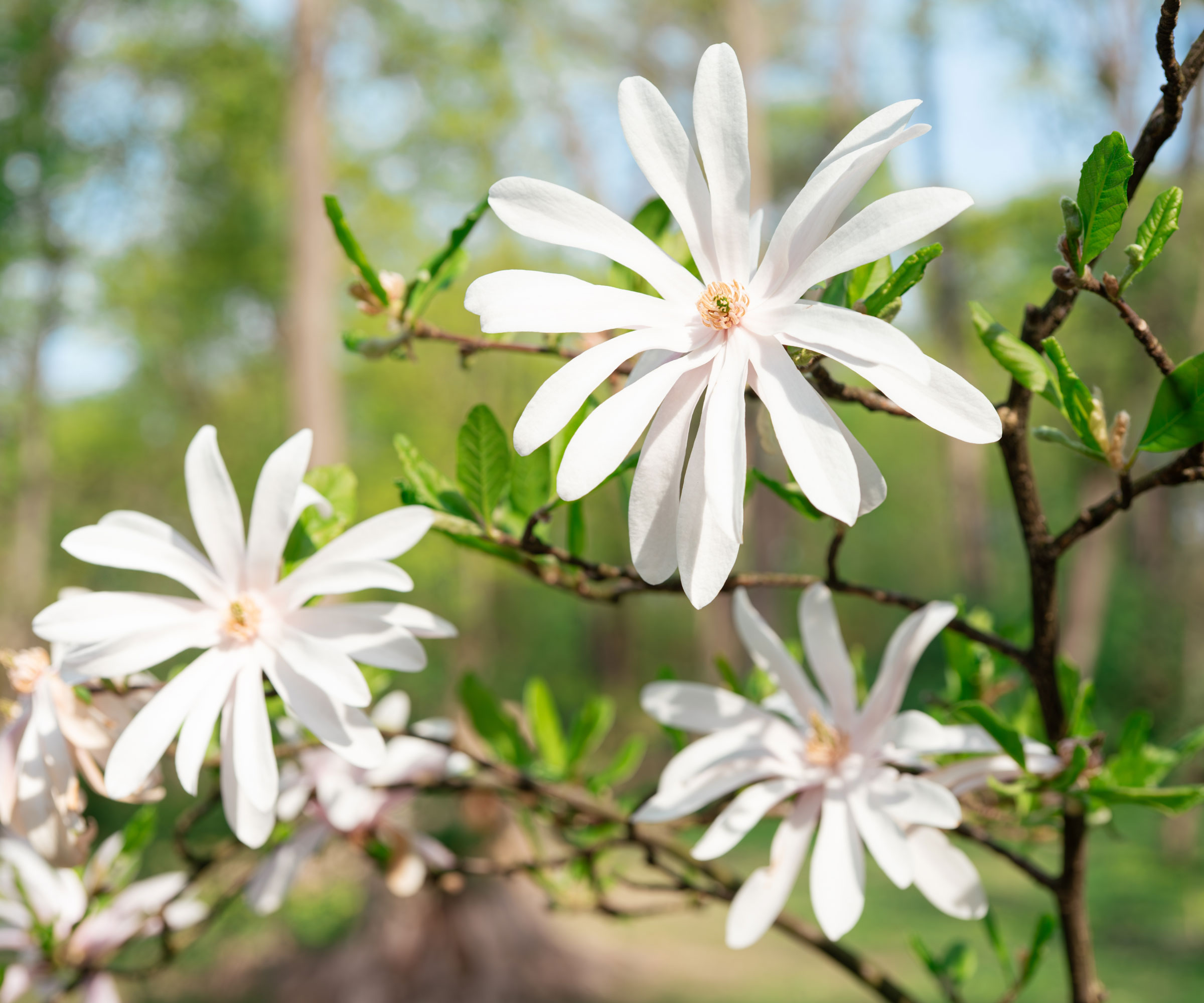
Star magnolia (Magnolia stellata) is one of the earliest bloomers in spring – sometimes late winter – often flowering even before the leaves have emerged. Its white, star-shaped flowers are lightly fragrant and appear in abundance.
This beautiful tree stays quite compact, usually growing between 10 to 15 feet tall with a similar spread, making it ideal for small front yards or tight backyard spaces. It thrives in full sun to part shade in USDA zones 4 to 9 and prefers moist but well-drained soil. Once established, it's relatively low-maintenance and long-lived.
If you're looking for one of the best container trees for a patio or courtyard, then young star magnolias adapt well to pots, too.
6. Eastern Redbud
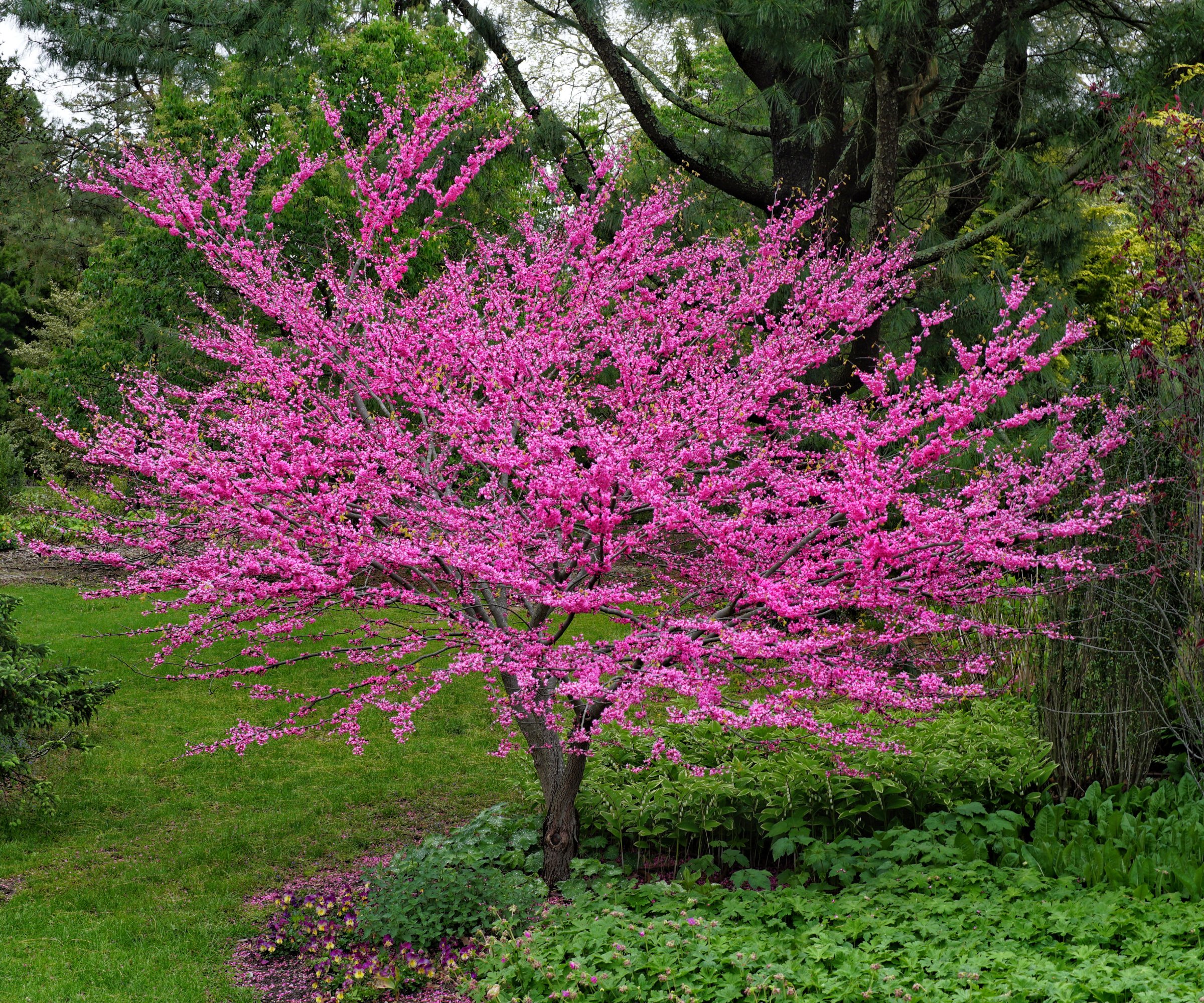
The Eastern redbud (Cercis canadensis) is one of the most charming native trees with vivid magenta-pink blooms that appear in early spring, clinging to bare branches for a dramatic effect.
This tree typically stays around 15 to 25 feet tall and 20 to 25 feet wide, though newer dwarf cultivars like 'Ruby Falls', available at FastGrowingTrees, and 'Little Woody' offer more compact growth. It grows well in full sun to partial shade in USDA zones 4 to 9, and tolerates a wide range of soils.
Redbuds are not only visually stunning, they are pollinator-friendly too, making them a top choice for small wildlife gardens or yards needing a pop of early spring color.
7. Flowering Crabapple
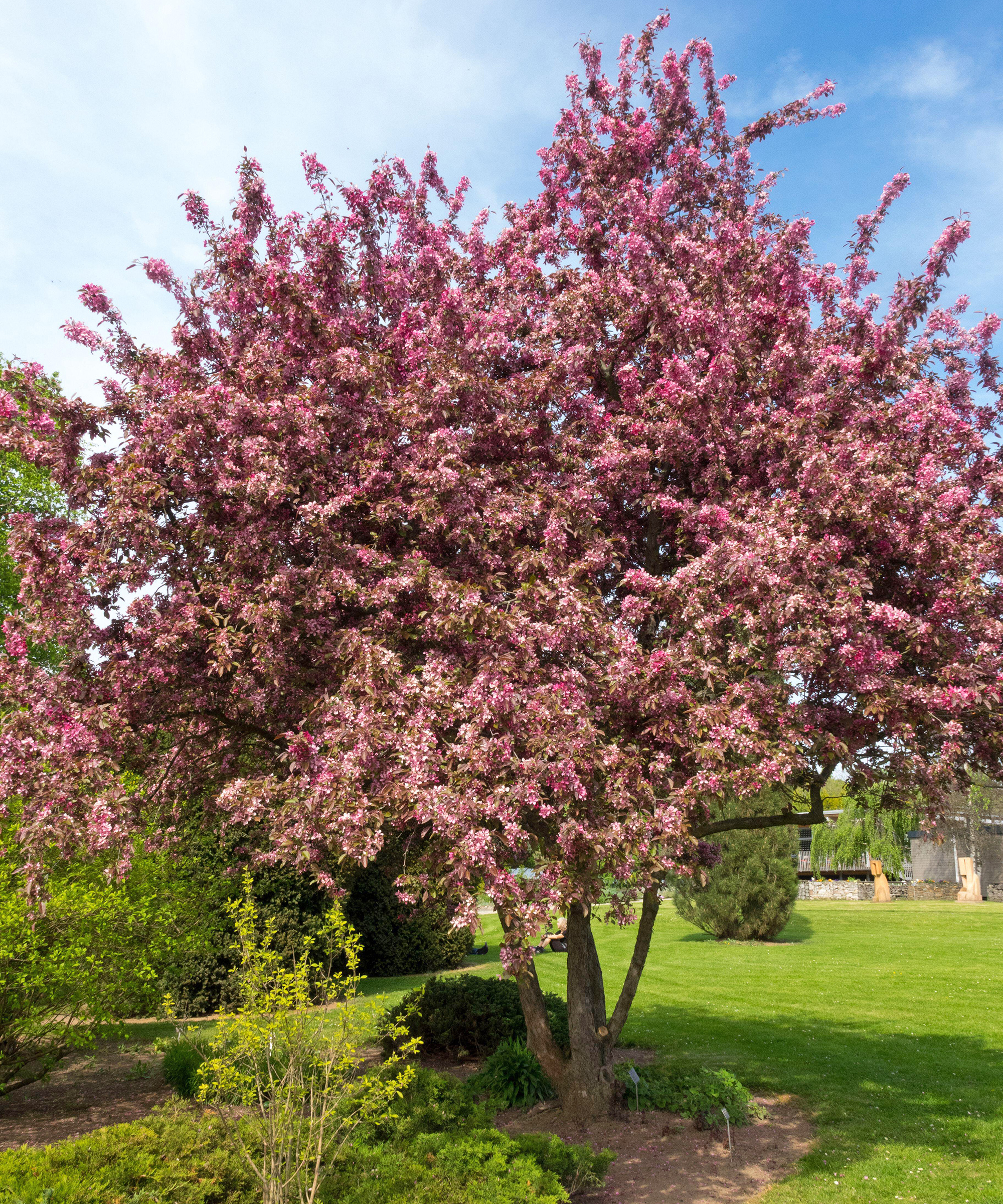
Flowering crabapple trees (Malus spp.) are true classics for small gardens. In spring, they explode with pink, red, or white blossoms that are often fragrant and are magnets for pollinators. After flowering, many varieties bear small fruits that persist into winter and feed local birds.
Look for disease-resistant dwarf varieties, such as 'Sugar Tyme', available at Walmart, or 'Royal Raindrops', available at FastGrowingTrees, that remain under 15 feet tall and have excellent shape and resilience.
These trees enjoy full sun and well-draining soil, though they're not overly fussy once established. They are suitable for USDA zones 4 to 8.
Crabapples are the types of trees that should be in every yard – they bring charm and multi-season interest in a size that suits even the smallest landscapes.
More Small Flowering Trees to Consider
- Crepe myrtle (Lagerstroemia indica) produces long-lasting blooms in pink, white, red, or purple that appear from mid-summer through fall. It loves sun and heat and has a mature height of 8 to 20 feet. USDA zones 6 to 10.
- Flowering dogwood (Cornus florida) is an iconic spring-bloomer with white or pink bracts, followed by fall color and red berries. It reaches 15 to 25 feet tall and wide and needs moist, rich soil. USDA zones 5 to 9.
- Fringe tree (Chionanthus virginicus) is a delicate native with airy, white fringe-like flowers in late spring. It's slow-growing and graceful, eventually reaching 12 to 20 feet tall and up to 15 feet wide. USDA zones 3 to 9.
- Chaste tree (Vitex agnus-castus) is a sight to behold with lavender-blue flower spikes from summer into fall. Reaching 10 to 15 feet tall and wide, it's drought-tolerant and ideal for hot, dry areas. USDA zones 6 to 10.
- Hawthorn (Crataegus viridis ‘Winter King’) pops with white spring flowers followed by red berries and attractive bark. Reaching 20 to 25 feet tall and wide, this tree is tough and long-lived. USDA zones 4 to 8.
- Dwarf Korean lilac (Syringa meyeri ‘Palibin’) is a dense, round shrub/tree with fragrant lavender flowers in late spring. Reaching just 6 to 8 feet tall, it's great for borders or containers. USDA zones 3 to 7.

Becca Badgett was a regular contributor to Gardening Know How for ten years. Co-author of the book How to Grow an EMERGENCY Garden, Becca specializes in succulent and cactus gardening.
- Melanie GriffithsEditor in Chief